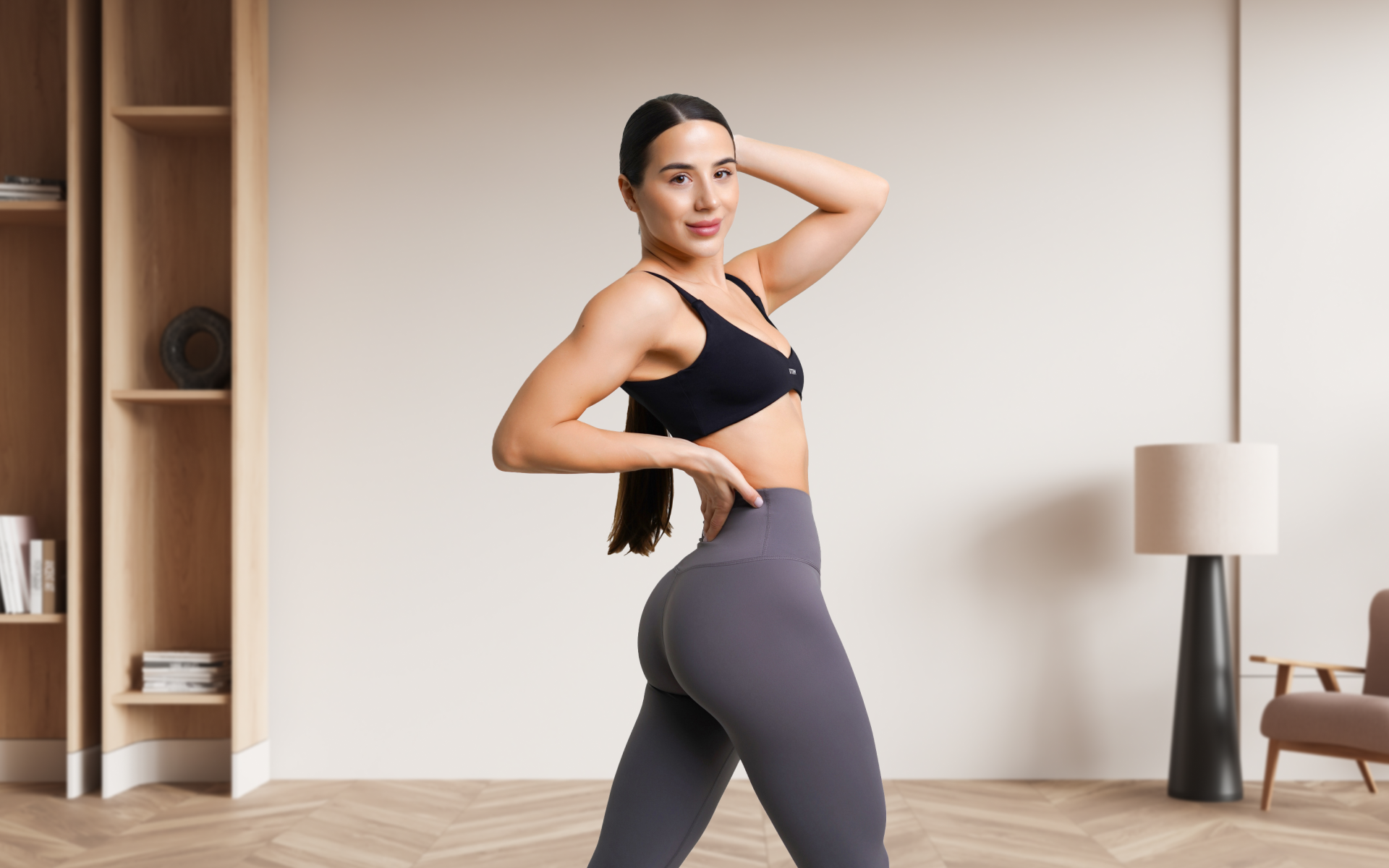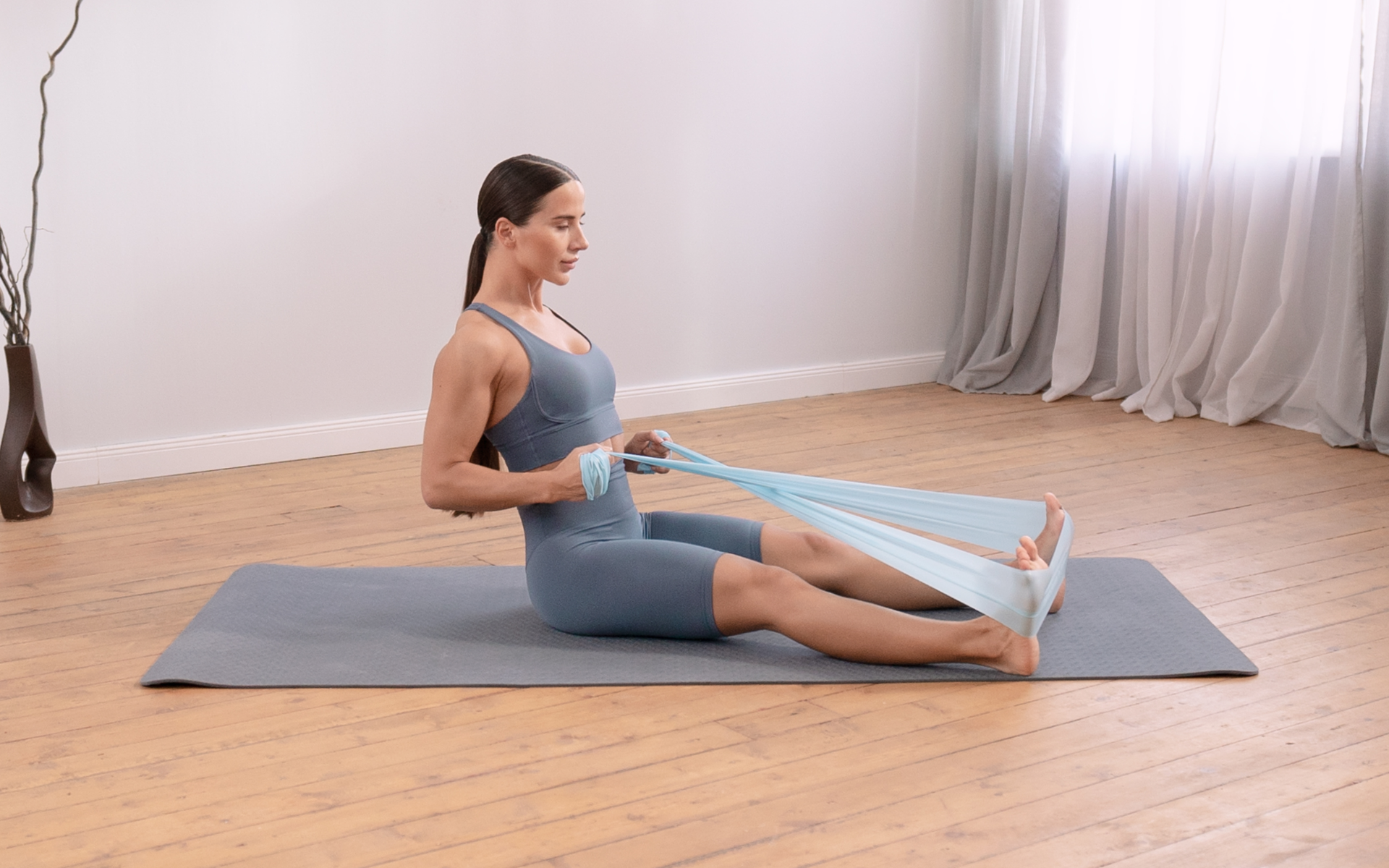Your neck plays a crucial role in your overall fitness and health. It’s responsible for supporting the weight of your head (2), which can range from 10 to 12 pounds on average. A strong neck is essential for daily activities such as sitting at a desk or driving and also helps prevent injuries in sports and other physical activities.
One way to strengthen your neck muscles is through calisthenics exercises. Calisthenics involves using your body weight to perform various movements that target specific muscle groups (10). In this article, we’ll discuss six effective calisthenics exercises that can help you strengthen your neck muscles.
Are Neck Workouts Real?
Neck workouts are real and involve strengthening and conditioning the complex network of musculature in this very important area. The neck contains several layers of muscles that all play a vital role in posture, movement, and stability (3). Neck strength is mostly important for reactive stabilization rather than active movement. This means that while your neck muscles may not be actively moving, they’re constantly at work to support and stabilize your head.
When you perform exercises that specifically target your neck muscles, you’re essentially training them to handle heavier loads and resist strain and injury. In addition, a strong neck can (11):
- Improve posture: A strong neck can help improve your overall posture, reducing the risk of neck and back pain.
- Prevent injuries: By strengthening your neck muscles, you’re less likely to suffer from common sports injuries such as whiplash, strains, and concussions (6) (7).
- Enhance athletic performance: A strong neck can improve athletic performance in contact sports by adapting and stabilizing gaze during quick changes in direction, in addition to maintaining proper head position during contact.
- Alleviate neck pain: Strengthening your neck muscles can help alleviate chronic neck pain caused by poor posture or muscle imbalances (1).
Now we know the benefits of having a strong neck, let’s dive into some calisthenics exercises to help you achieve just that.
What Workouts Build the Neck?
Workouts that engage the neck muscles (such as the trapezius, levator scapulae, and sternocleidomastoid) are essential for building a strong neck. Calisthenics exercises that target these muscles include:
Neck Bridges
Target Muscles: Neck bridges primarily target the sternocleidomastoid, trapezius, and other stabilizing muscles in the neck. This calisthenics neck exercise uses no equipment and strengthens the neck, shoulders, and upper back.
Execution:
- Start Position: Lie on your back with your knees bent and your feet flat on the ground.
- Hand Placement: Place your hands beside your head or on your chest.
- Initial Lift: Slowly lift your hips off the ground while keeping your head and feet grounded.
- Head Position: Roll onto the top of your head, ensuring your neck is comfortably extended.
- Body Alignment: Keep your body in a straight line from your knees to your head.
- Hold Position: Hold this position for a few seconds, feeling the stretch and contraction in your neck muscles.
- Lower Hips: Carefully lower your hips back to the ground.
- Repeat: Repeat the movement for the desired number of repetitions.
- Maintain Breathing: Breathe steadily throughout the exercise.
- Cool Down: Gently stretch your neck after completing your set.
BetterMe app is a foolproof way to go from zero to a weight loss hero in a safe and sustainable way! What are you waiting for? Start transforming your body now!
Neck Flexion and Extension
Target Muscles: This calisthenics neck exercise can be performed at home and focuses on the anterior and posterior neck muscles, particularly the sternocleidomastoid for flexion and the upper trapezius for extension.
Execution:
- Start Position: Lie on your back on a bench or bed with your head hanging off the edge.
- Neck Alignment: Ensure your neck is aligned with your spine.
- Flexion Movement: Slowly bring your chin toward your chest, feeling the contraction in the front of your neck.
- Pause: Hold the flexed position for one to two seconds.
- Extension Movement: Extend your neck backward until it’s aligned with your spine again.
- Controlled Motion: Perform the movements slowly to avoid injury.
- Breathing: Exhale as you flex and inhale as you extend your neck.
- Repetitions: Complete 10-15 repetitions per set, then flip onto your front and perform the exercise by extending your head against gravity to work the neck extensors.
- Avoid Strain: Don’t overextend or force the movement.
- Cool Down: Lightly stretch your neck after completing your set.
Side Neck Bridges
Target Muscles: This calisthenics neck workout for beginners targets the lateral neck muscles, including the medial scalenes and sternocleidomastoid, and enhances side-to-side stability.
Execution:
- Start Position: Lie on your back with your knees bent and your feet flat on the ground.
- Transition: Roll onto one side, supporting your body with your feet and the side of your head.
- Hand Placement: Place your hands next to your head for support.
- Lift Hips: Slowly lift your hips off the ground, balancing on your shoulder and the side of your head.
- Body Alignment: Keep your body in a straight line.
- Hold Position: Hold the bridge position for a few seconds.
- Lower Hips: Carefully lower your hips back to the ground.
- Switch Sides: Rotate to the other side and repeat the movement.
- Repetitions: Perform 5-10 repetitions per side.
- Cool Down: Stretch your neck gently afterward.
Prone Cobra
Target Muscles: This calisthenics neck and back workout targets the posterior neck muscles, primarily the upper trapezius and rhomboids, in addition to the lower back.
Execution:
- Start Position: Lie face down on a mat with your arms at your sides.
- Lift Chest: Slowly lift your chest off the ground while squeezing your shoulder blades together.
- Head Position: Keep your head in a neutral position or slightly elevated if comfortable.
- Hold Position: Hold this position for 10-15 seconds, feeling the stretch and contraction in your neck and back muscles.
- Lower Chest: Gently lower your chest back to the ground.
- Repeat: Complete 8-10 repetitions.
- Breathing: Breathe steadily throughout the exercise.
- Cool Down: Stretch your neck and upper back after completing your set.
Isometric Neck Exercises
Target Muscles: These exercises engage multiple neck muscles, including the sternocleidomastoid, trapezius, and deep cervical flexors, and are excellent for strengthening without movement.
Execution:
- Start Position: Sit or stand in a comfortable position.
- Hand Placement – Front: Place your hand on your forehead.
- Apply Pressure: Gently press your hand against your forehead.
- Resist: Push your head forward against your hand without moving your neck.
- Hold: Maintain the pressure for 5-10 seconds.
- Hand Placement – Side: Place your hand on the side of your head.
- Apply Side Pressure: Press your hand against the side of your head.
- Resist Sideways: Push your head sideways against your hand.
- Switch Sides: Repeat on the other side and at the back of your head.
- Repetitions: Perform 5-10 repetitions for each direction.
Read more: The Simplest Lower Back Calisthenics Guide for Beginners
Head Nods
Target Muscles: This simple yet effective exercise targets the sternocleidomastoid and suboccipital muscles, which makes it perfect for a calisthenics neck workout with no equipment needed.
Execution:
- Start Position: Stand or sit with your back straight.
- Neck Alignment: Ensure your head is aligned with your spine.
- Nod Forward: Slowly tilt your head forward as if nodding “yes.”
- Chin to Chest: Bring your chin towards your chest.
- Hold: Hold the position for a second.
- Return: Slowly return to a neutral position.
- Nod Backward: Tilt your head backward, looking up slightly.
- Hold: Hold the position for a second.
- Controlled Movements: Perform the nods in a controlled manner.
- Repetitions: Complete 10-15 repetitions.
Each of these exercises can be incorporated into a calisthenics neck workout at-home routine, offering a balanced approach to strengthening the neck muscles safely and effectively.
How to Train Your Neck Without Weights
Training your neck without weights has four basic principles:
- Resistance: Utilize your own body weight, gravity, or resistance bands for added challenge.
- Isometric Contractions: Engage the muscles without movement by pushing or resisting against a stationary object (5). This will be beneficial for improving cervical stability.
- Range of Motion: Move your head through its full range of motion with control and proper alignment. These isotonic contractions are the opposite of the isometric contractions mentioned above and are important for strengthening the neck through its wide movement range.
- Progressive Overload: Gradually increase the difficulty by adding more repetitions, sets, or resistance (8).
Resistance
Using your own body weight, gravity, or resistance bands for neck training can be quite effective.
Body weight exercises such as neck bridges or prone cobras naturally use the weight of your head or body to create the necessary resistance.
Gravity plays a role when you perform movements such as head nods or neck flexions while lying down. Resistance bands offer another versatile tool, allowing for adjustable resistance that can be tailored to your fitness level.
By using these tools, you can engage and strengthen the neck muscles without the need for traditional weights.
Isometric Contractions
Isometric contractions involve engaging the neck muscles without actual movement, which helps build muscle endurance and stability (5).
For example, placing your hand against your forehead and pushing while resisting the force activates the neck muscles without moving your head.
These exercises are particularly beneficial for those who are looking to avoid dynamic movement due to injury or stiffness. They can also be done anywhere, making them a convenient addition to any fitness routine.
Range of Motion
Moving your head through its full range of motion with control and proper alignment ensures that all the neck muscles are engaged and stretched. This involves exercises such as head nods and neck rotations, which explore the full capacity of neck movement.
Ensuring proper alignment is crucial for avoiding strain or injury. This principle helps maintain flexibility, prevent stiffness, and improve mobility in the neck (9).
Progressive Overload
Progressive overload is essential for continuous improvement and strength gains. This principle involves gradually increasing the difficulty of your exercises by adding more repetitions, sets, or resistance over time (8).
For neck training, this could mean increasing the duration of holds in isometric exercises, adding more repetitions to dynamic movements, or using thicker resistance bands.
By progressively overloading the muscles, you will ensure that they are continually challenged, leading to greater strength and endurance over time.
Intense sweat sessions, working weight loss tips, lip-smacking recipes come in one package with the BetterMe app. And all of it is at your fingertips, start transforming your life now!
Can You Train Your Neck with Calisthenics Every Day?
Training one muscle group every day is generally not recommended as it doesn’t allow for adequate recovery time. For optimal results, it’s best to alternate between different muscle groups and give each group a rest day in between workouts. This allows the muscles to repair and grow stronger (12).
However, neck training can be incorporated into your daily routine by using low-intensity exercises such as head nods or isometric contractions. These exercises can be done every day without causing excessive strain on the muscles. It’s important to listen to your body and avoid overtraining, which could lead to injury.
Read more: Calisthenics Shoulder Exercises: Techniques and Workouts
FAQs
Is it OK to exercise your neck?
Yes, it’s important to exercise your neck muscles as they play a crucial role in supporting the head and maintaining proper posture (11). Strengthening and stretching these muscles can also help reduce stiffness and pain in the neck. Over time, regular neck exercises can improve overall neck strength and function.
How can you gain muscle in your neck?
Gaining muscle in your neck requires a similar approach to every other muscle group – progressive overload, proper form and technique, and adequate rest and recovery.
You can use a combination of resistance exercises such as neck nods or neck bridges, isometric contractions, and dynamic movements with control to stimulate the muscles and promote growth over time.
It’s also important to fuel your body with a balanced diet that includes enough protein to support muscle growth (4).
Do pro bodybuilders train their necks?
Pro bodybuilders train their neck muscles, as having a strong and defined neck is essential for overall aesthetic and functional balance. However, they often use weighted equipment such as neck harnesses or resistance machines to target these muscles effectively.
It’s important to consult a fitness professional before incorporating heavy weights into your routine to ensure proper form and prevent injury.
The Bottom Line
Incorporating neck training into your calisthenics routine can provide several benefits, including improved posture, reduced neck pain, and increased strength and stability in the neck muscles. By using proper form and gradually increasing the difficulty of exercises, you can safely and effectively train your neck without weights. Remember to always listen to your body and give yourself adequate rest days to see optimal results.
DISCLAIMER:
This article is intended for general informational purposes only and does not serve to address individual circumstances. It is not a substitute for professional advice or help and should not be relied on for making any kind of decision-making. Any action taken as a direct or indirect result of the information in this article is entirely at your own risk and is your sole responsibility.
BetterMe, its content staff, and its medical advisors accept no responsibility for inaccuracies, errors, misstatements, inconsistencies, or omissions and specifically disclaim any liability, loss or risk, personal, professional or otherwise, which may be incurred as a consequence, directly or indirectly, of the use and/or application of any content.
You should always seek the advice of your physician or other qualified health provider with any questions you may have regarding a medical condition or your specific situation. Never disregard professional medical advice or delay seeking it because of BetterMe content. If you suspect or think you may have a medical emergency, call your doctor.
SOURCES
- Active Neck Muscle Training in the Treatment of Chronic Neck Pain in Women: A Randomized Controlled Trial (2003, jamanetwork.com)
- Anatomy, Head and Neck, Neck (2023, ncbi.nlm.nih.gov)
- Anatomy, Head and Neck, Neck Movements (2023, ncbi.nlm.nih.gov)
- Eat to Gain Muscle-The Role Food Plays in Strength Training (2024, issaonline.com)
- Isometric training and long-term adaptations: Effects of muscle length, intensity, and intent: A systematic review (2019, researchgate.net)
- Neck Muscular Strength, Training, Performance and Sport Injury Risk: A Review (2016, pubmed.ncbi.nlm.nih.gov)
- Neck strength: a protective factor reducing risk for concussion in high school sports (2014, pubmed.ncbi.nlm.nih.gov)
- Progression of volume load and muscular adaptation during resistance exercise (2010, ncbi.nlm.nih.gov)
- Range of Motion (n.d., physio-pedia.com)
- The advantages of body-weight exercise (2022, health.harvard.edu)
- The Importance of Training the Head and Neck (n.d., ncaa.org)
- Why Rest Days Are Important for Muscle Building (n.d., blog.nasm.org)










